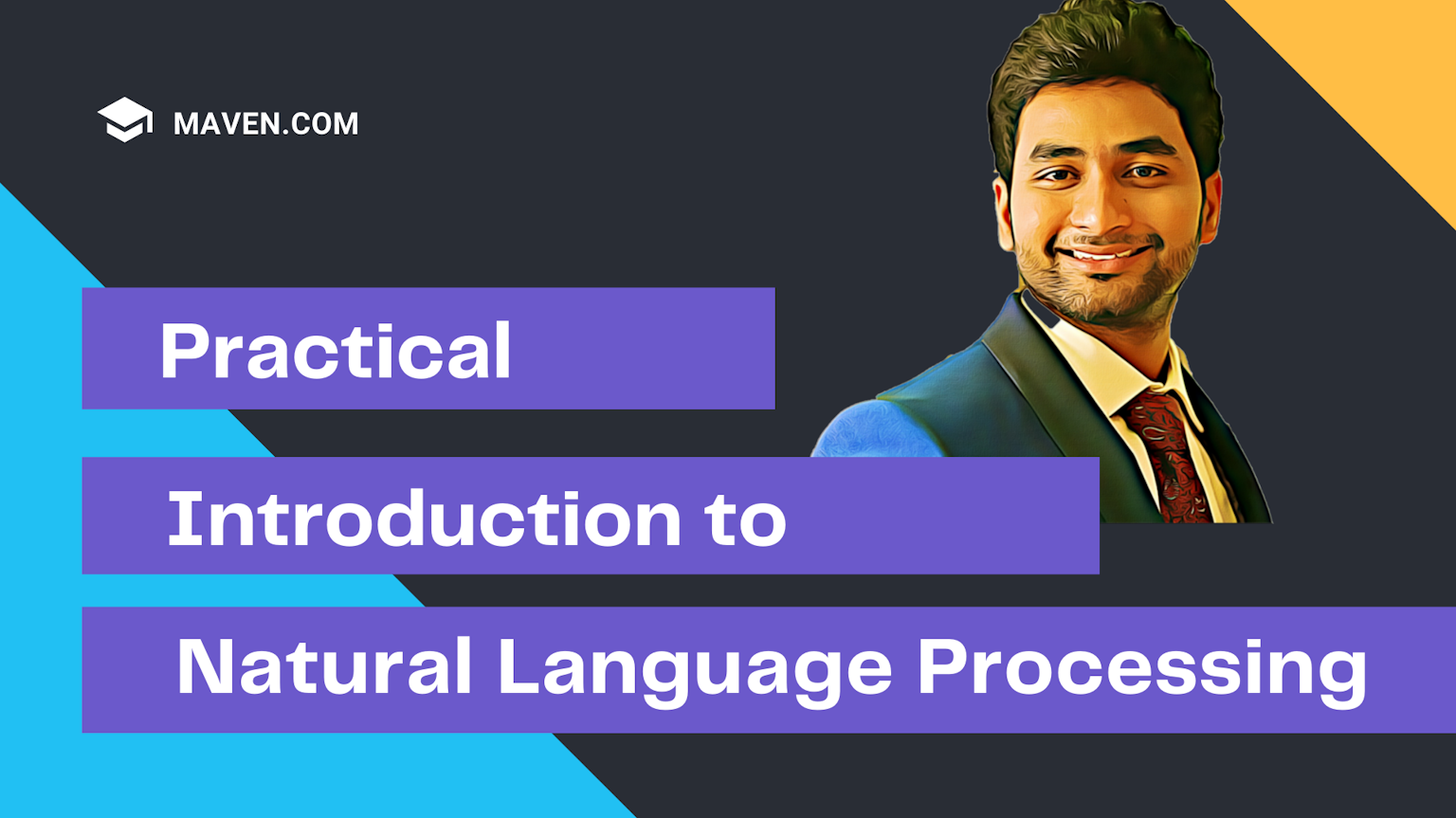Practical Introduction to NLP
4 Weeks
·Cohort-based Course
Transform yourself from a Python Developer to an NLP Data Scientist in 4 weeks with practical projects.
Practical Introduction to NLP
4 Weeks
·Cohort-based Course
Transform yourself from a Python Developer to an NLP Data Scientist in 4 weeks with practical projects.
Course overview
Practical Introduction to Natural Language Processing
You will become confident to take ownership of NLP projects at work and deliver them end-to-end with the unique product-based learning approach taught in the course.
Who is this course for
01
Recent graduates or about to graduate students, who want to start their career as an NLP Data Scientist
02
Seasoned working professionals who want to transition and establish themselves as NLP developers
03
AI enthusiasts who want to dabble with NLP and explore the potential for themselves
Topics covered
NLP product for Movie Production House with Streamlit
The course starts with a problem statement of building an NLP product for a movie production house that includes features like finding similar movies, characters, etc.
We will introduce NLP techniques progressively and build features with Streamlit for frontend visualization.
Vectorizing documents with TF-IDF
Intuitively derive the logic of calculating the importance of a word which would later be called TF-IDF (Term Frequency & Inverse Document Frequency).
Applications using TF-IDF: Keyword extraction, summarization, and NLP recommendation systems.
Vectorizing documents with transformers
Convert words and sentences into vectors with cutting-edge algorithms like sentence transformers.
Applications using sentence transformers: Keyword extraction, Topic Modeling, and NLP recommendation systems.
See significant improvement when compared to TF-IDF.
GPT-3 and production deployment
We will look at how far NLP has progressed with language models like GPT-3 and explore various use-cases with it.
We will cover deployment by deploying a GPT-3 based application via an API that anybody can use in their projects.
Testimonials
Lavanya Gupta
Olaifa Julius 'Tunde
Be the first to know about upcoming cohorts
Practical Introduction to NLP
Meet your instructor
Ramsri Goutham Golla
Ramsri Goutham Golla
Ramsri is a Lead Data Scientist with 8+ years of work experience at startups and large corporations across Silicon Valley, Singapore, and India.
Most recently he has been a co-founder and CTO of a VC-backed NLP startup, Aurora: AI-Assisted Assessments.
Also, Ramsri is very active on Social Media sharing his NLP wisdom. Join Ramsri's 45k+ followers across various platforms.
Be the first to know about upcoming cohorts
Practical Introduction to NLP
A video from the Masterclass taught by Ramsri
Snippet from the 2 hr weekend Masterclass
Learning is better with cohorts
Active learning, not passive watching
This course focuses on live workshops and hands-on projects
Learn with a cohort of peers
You’ll be learning in public through breakout rooms and an engaged community
Be part of a life-long community
You will be part of a slack channel with like-minded people in the NLP space where you can ask questions, get career guidance and grow with a peer group.
Frequently Asked Questions
Be the first to know about upcoming cohorts
